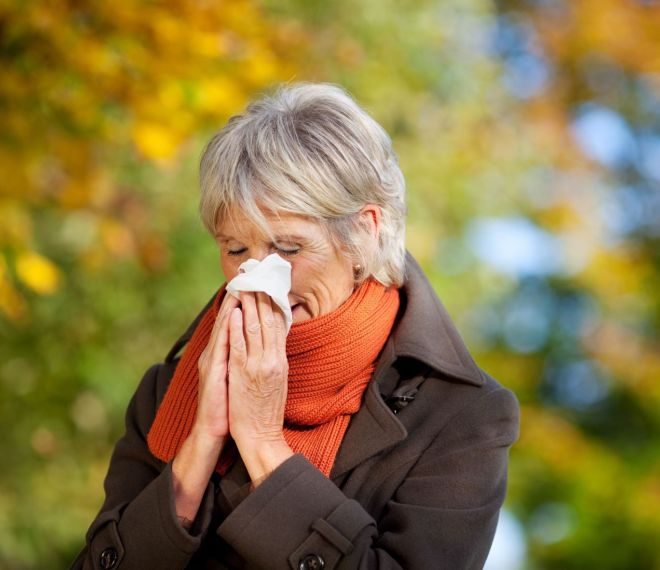Influenza during the COVID-19 pandemic

Similarities and Differences – COVID-19 vs. flu
The disease caused by COVID-19 and the influenza virus show similar symptoms. Both cause respiratory disease, the symptoms range from asymptomatic to mild to severe disease and death.
Influenza and COVID-19 both spread in a similar way. Droplets of respiratory secretions from a sick person can transmit the virus to other people nearby. Particles can "hang around" in the air for a long time, while another person can breathe them in and become infected. An additional possibility of infection is when people touch a surface that has viruses on them and then transfer them by touching their face.
People infected with the coronavirus or the flu do not realize they are sick for several days, and during this time they can unknowingly infect others before they feel sick.
The reproductive number - the number of secondary infections generated by an infected individual - for the COVID-19 virus is between 2 and 2.5, which is higher than for influenza.
The most vulnerable
Children are an important driver of the spread of the influenza virus. In the case of the COVID-19 virus, initial data show that children are less affected than adults and preliminary data suggest that children are infected from adults and not the other way around.
Children, pregnant women, the elderly, people with chronic diseases and the immunosuppressed are most at risk of severe influenza infection. In the case of COVID-19, the current idea is that older age and underlying medical conditions increase the risk of severe infection.
The death toll from COVID-19 appears to be higher than the flu. The mortality rate for COVID-19 is between 3-4%, while for seasonal flu, this number is well below 0.1%.
Defense is the best offense!
Both diseases can be prevented by wearing a mask, frequent and thorough hand washing with soap and water for at least 20 seconds, frequent use of an alcohol-based hand sanitizer containing at least 60% alcohol, staying at home and limiting contact with infected people. Covering the mouth and nose with the elbow when coughing or sneezing. Physical distancing can limit the spread of COVID-19 in communities.
Influenza once
Briefly about the influenza virus. The pathogen is an RNA virus based on the genetic material of Myxovirus influenzae. The virus is classified into types A, B, and C based on the substances inside.
In terms of epidemics, type A is the main pathogen. It claims millions of lives during pandemics. Type AB infects mainly children and adolescents and its course is milder. AC type has no practical significance.
Type A virus can be separated into further subtypes based on the two substances (H, N) on its surface. Substance AH helps the virus enter the infected cell, substance N helps the virus multiplying in the infected cell to escape from the cell. From the AH subtype, H1, H2, H3, H7 and H9, from the N subtype N1, N2 and N7 became known during the epidemics.
It is important to understand that the above two substances on the surface of the virus can undergo minor and major changes over the years. Bigger and more dangerous changes occur when two types of influenza A virus carrying different H and N substances on its surface appear simultaneously in an infected cell. In such cases, whole gene sections can be exchanged between the two A viruses, creating a new A virus, with which the human immune system has not yet dealt with, and therefore has no protection against it. Such a dangerous "gene exchange problem" can develop if, e.g. A type of avian influenza (H5N1), harmless to humans, encounters a human influenza A virus in a cell.
But what will the epidemic be like and why is vaccination good?
Epidemics develop due to these changes, typically from November to April. According to the WHO, 1 billion people are infected every year. In the witch's kitchen of nature, type A viruses are formed every year that cause the death of 1 million people every year, and every 10-40 years, pandemics that are associated with multiples of this death rate. The 1918/19 pandemic resulted in over 20 million deaths.
Because of the new subtype A virus that appears every year, annual immunization with the killed vaccine is important. When compiling the vaccine, the current WHO recommendation is taken into account each year in accordance with the virus subtype A that started the epidemic. Protection is 70% under the age of 65, less in the elderly, but over the age of 65, vaccination can reduce mortality by 50%.
By acting on the substance H of the type A virus, the presence of certain bacterial respiratory pathogens can increase the entry of the virus into the human cell, thereby "preparing" the later influenza pneumonia. Furthermore, they can cause bacterial super-infection of an organism weakened by the virus. It is therefore important to use vaccinations against these bacteria in parallel in the fight against the epidemic, all the more so since there is a vaccine against these pathogens that needs to be administered once and results in lifelong protection.
The flu vaccine can help shorten the length of the flu season and reduce the number of people affected in the 2020-2021 flu season, make it easier for doctors to diagnose corona virus infection, and contribute to a more even burden on the healthcare system. Let as many people as possible take advantage of the opportunity.
Get to know our internist:
Dr. Zoltán Vancsura
